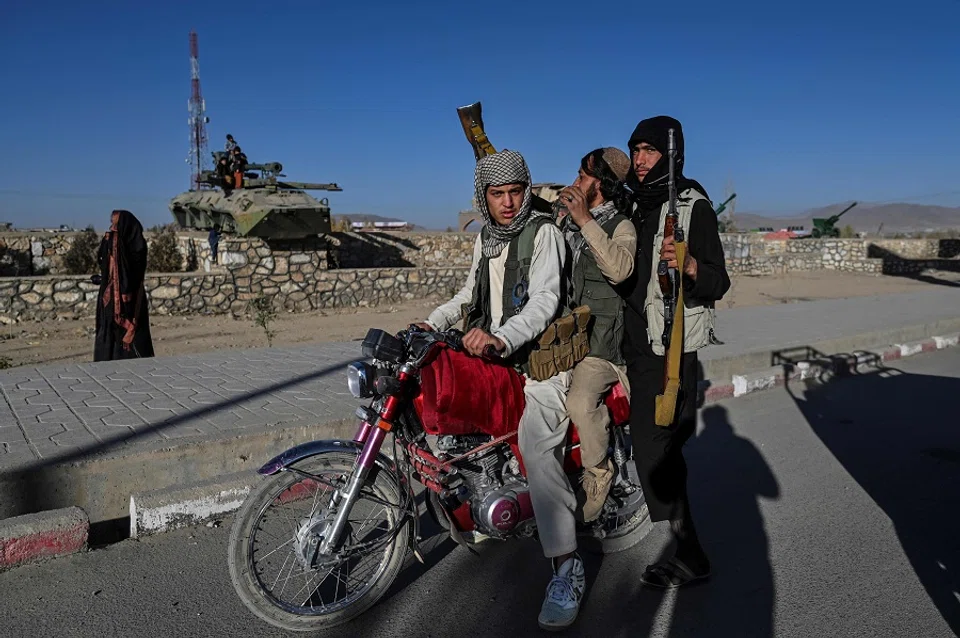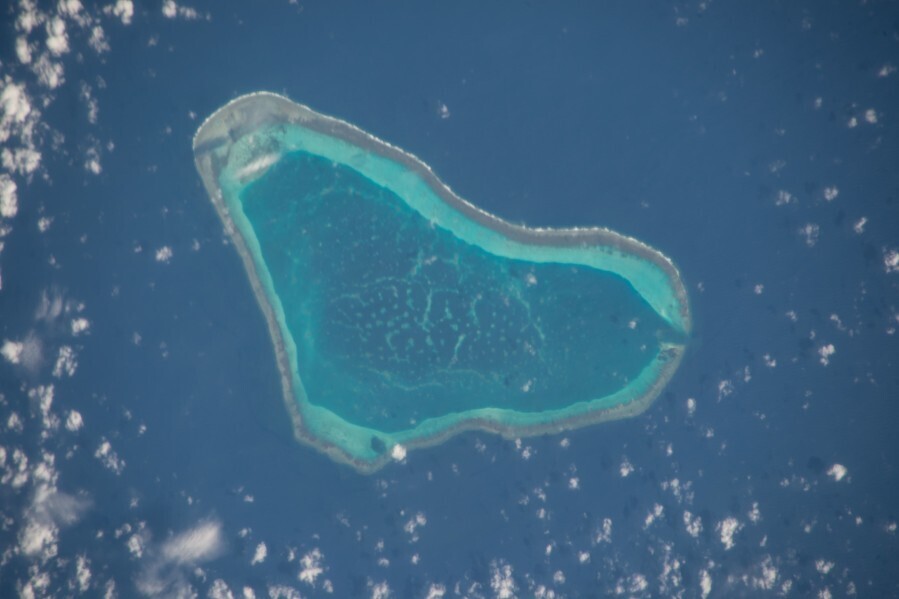China and Russia compete for influence in Central Asia
China-Russia rivalry in the Central Asian region is intensifying, with the US's departure from Afghanistan and the two countries seeking to fill the power vacuum by working within their Central Asian spheres of dominance. Can the two powers work together to foster greater regional stability or will they let their competitiveness get the better of them?

Being a close neighbour, Afghanistan is clearly of geostrategic importance to China. Due to its complex domestic situation, Afghanistan's relationship with China has always been delicate. How China will respond to the sudden power vacuum left by the US's withdrawal leaves the international community guessing.
In fact, the discussion of China-Afghanistan relations also involves relations with Russia, another great power, and other neighbouring Central Asian countries. Although China shares a short border with Afghanistan, traditionally speaking, Afghanistan has always been a chess game between Russia and the US, with China rarely intervening. As US influence in Central Asia wanes, China's importance has come to the fore.
On one hand, after the departure of the US, which is a common strategic rival of both China and Russia, China-Russia rivalry in Central Asia has become more prominent. Objectively speaking, China and Russia have differing views on energy resources and Central Asia's economic development model. If these differences are magnified, they will find it hard to work together to maintain regional peace.
Melding Afghanistan into Central Asian stability
On the other hand, collaboration between China and Russia on multiple international platforms is also evident to all, bringing some certainty to this extremely unstable region. For example, at a United Nations Security Council meeting on 22 December 2021, the two countries unanimously opposed the 1988 Afghanistan sanctions regime under which humanitarian exemption is subject to a time limit. Both countries argued that "a temporal restriction would not provide the predictability and flexibility humanitarian organisations require to operate efficiently".

Following the US's troop withdrawal from Afghanistan, China promptly decided to provide Afghanistan with 200 million RMB (roughly S$42 million) worth of emergency aid including food, resources, vaccines and medicine. Afghanistan shares a border with several Central Asian countries. On top of providing direct investment and humanitarian aid, China's aid to Afghanistan also plays a positive role in promoting regional stability through cooperation with Central Asian countries.
Pakistan and Afghanistan share a 2,570-kilometre border that lacks supervision, exposing the region to terrorist infiltration. To safeguard its own security, China will not sit back and do nothing. Also, Tajikistan shares a 1,300-kilometre border with Afghanistan. The series of military activities that have taken place along the China-Tajikistan border is also aimed at tackling Afghanistan's terrorist threat.
Since 1991, Chinese investment in Central Asia has increased a hundredfold.
In addition, the establishment of the Quadrilateral Cooperation and Coordination Mechanism between Afghanistan, China, Pakistan, and Tajikistan also reflects China's multilateral efforts at resolving the Afghanistan issue through a Central Asian platform. The existing Shanghai Cooperation Organisation (SCO) framework and China-Pakistan Economic Corridor also makes it possible and ensures that China is able to help Afghanistan rebuild itself through multiple channels. Although Afghanistan is not a member of the SCO, Central Asian countries have provided a platform to facilitate the peace process.

Central Asia is an important bridgehead for the Silk Road (land routes) under the Belt and Road Initiative (BRI). Since 1991, Chinese investment in Central Asia has increased a hundredfold. In 2019, the trade volume between China and the five Central Asian countries totalled US$46.34 billion. Geographically, China shares a 3,300 kilometre border with Kazakhstan, Kyrgyzstan and Tajikistan, and borders Afghanistan along the Wakhan Corridor. The China-Afghanistan border is also less than 100 kilometres away from the China National Highway 314.
Although the natural environment at the border of the Wakhan Corridor and China is harsh, instability in Afghanistan might still have spillover effects and present challenges to China via its borders with Central Asian countries in terms of cross-border drug trafficking, illegal immigrants and terrorism. For example, around the time the Taliban took control of Afghanistan, radical groups in Pakistan were emboldened. The Taliban movement in Pakistan became more active, leading to a series of terrorist attacks, including a bus exploding on its way to the Dasu Dam, in which nine Chinese nationals were killed.
The strategic competition between China and Russia in Central Asia has also brought both opportunities and challenges, as seen in two main aspects.
First, in terms of defence, there is some overlap between the SCO and the Russia-led Collective Security Treaty Organization (CSTO). While China's overseas military involvement is limited by its foreign policy of non-intervention, three Central Asian countries have purchased China-made drones. The security challenge posed by the political unrest in Afghanistan has led Central Asian countries to depend on regional security groupings to maintain domestic security, which would give China and Russia more speaking rights.
China's large infrastructure investments in Central Asia also poses a threat to Russia's idea of regional economic integration in Central Asia.

Second, economically, the BRI has to some extent stolen the limelight of the Russia-led Eurasian Economic Union (EEU).
China's economy is eight times that of Russia's; China's large infrastructure investments in Central Asia also poses a threat to Russia's idea of regional economic integration in Central Asia. The growing economic and power imbalance between China and Russia may be adding to Russia's sense of insecurity, leading it to seek a more adversarial policy. The big power struggle between China and Russia may hamper both countries' efforts towards regional peace.
The elites in Russia and Kazakhstan feel that the Central Asian elites are generally sceptical about Russia's proposed Greater Eurasian Partnership, but have more diverse views about China's BRI, including some degree of approval and support. This attitude is largely because the elites benefit more from China's investments, while some Central Asian leaders have studied in China, such as Chinese-speaking former Kazakhstan Prime Minister Karim Massimov.
Russia's edge in terms of language and culture
However, looking at the general population, huge differences in language and culture still pose considerable challenges for China in building up its national image in Central Asian countries. The main languages in Central Asia are the Turkic and Slavic languages, and from the time of the Soviet Union, it has been influenced by Russian culture and propaganda, with Russian still the common language in central Asia. Russia's cultural industry, including TV series and pop culture, are common in central Asia, while Russians constitute the main source of the migrant workforce in central Asia.
China is rising quickly in central Asia, and two-way cultural osmosis is a long-term process that cannot be achieved overnight by large investments in Confucius Institutes.

As investments come in from China, there is some demand from Central Asians in learning the Chinese language and understanding Chinese culture; China's investments in educational diplomacy in recent years has also seen some results. The Chinese government's scholarships and increased support of the teaching faculties at Confucius Institutes have boosted Central Asian students' confidence in China to some extent. However, due to the difficulty of the Chinese language and students' general unfamiliarity with Chinese culture, many students only learn the rudiments of the language.
Kazakh students from well-off families prefer to study in Western countries, and the resulting cultural divide is hard to bridge in the short term. China is rising quickly in central Asia, and two-way cultural osmosis is a long-term process that cannot be achieved overnight by large investments in Confucius Institutes. Even if on a national level China's security and economic cooperation with Central Asia is deepening, in terms of culture there is still some way to go before it earns a welcome from the people of Central Asia.





